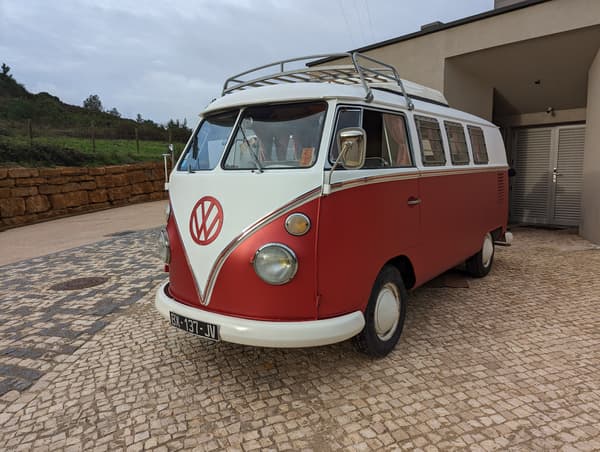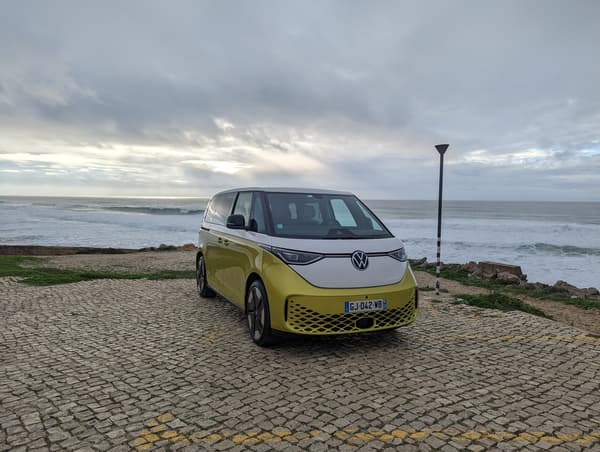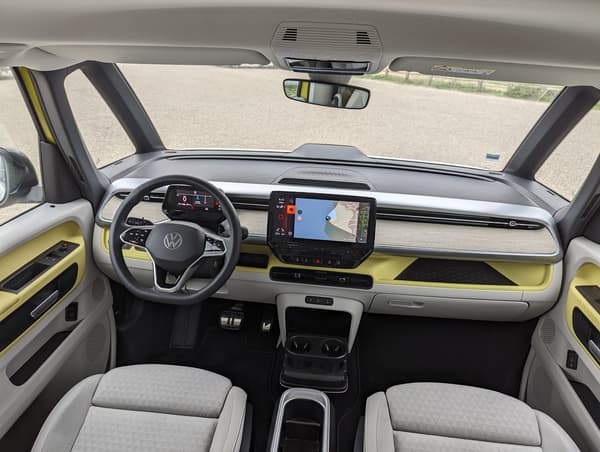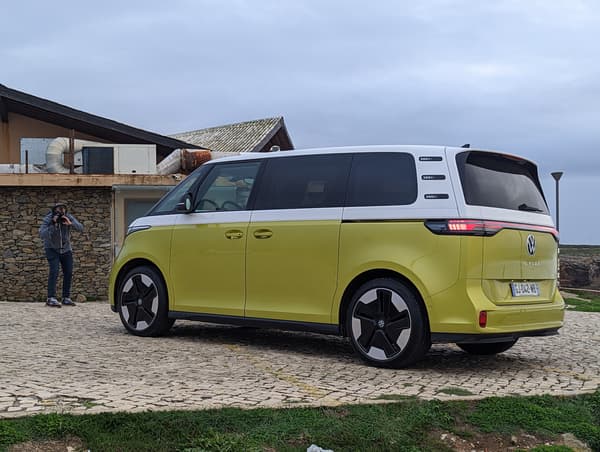The ID Buzz is the fun name chosen by Volkswagen to designate the rebirth of a myth: the Combi. This van alone symbolizes the hippie culture, its desire to travel and escape, or even the ideal boat for surfers to reach the nearest beach, in California or South-West France.
Why a new Combi?
Small historical point to start and understand how his successor is positioned. The Combi of the 20th century went through three generations from 1950: the first two, which retain a chubby side and evoke a certain carelessness at first glance, and the third, much squarer, like the models born in the 1980s. But the Combi has above all have been the subject of multiple variations and customizations, for example the Westfalia versions, which bear the name of this German bodybuilder who made it possible to have a berth space at roof level, or with body repainted with a lot of “flower power ” and others “peace & love”. “reasons.

It is surely at a recent turning point in its history that Volkswagen realized the interest in reviving its cult Combi by offering it a modern and 100% electric version. In 2015, the year of Dieselgate, the German brand realized that it was losing all the positive that its brand could transmit in a market of prime importance, the United States.
Then follow two prototypes, the Budd-e from 2016 and a certain “ID Buzz concept” in 2017, which should prepare people for the big electric change the brand intends to take. And the choice of support for this manifesto is not trivial: California, the promised land of the Combi, is also the state where the Volkswagen falsified emissions scandal broke out.
How much is Serial Buzz ID worth?
A little more than seven years after the start of the Dieselgate, here we are before the ID Buzz series, which begins its commercialization at the end of 2022. In terms of aesthetics, Volkswagen has done a lot by offering a modern Combi in its lines. , but whose two-tone body pays a clear homage to its distant ancestor.
Thus we find the large glass surfaces, the huge VW logo on the front and rear or even its sliding side door.

Inside, we are still a long way from the Combi spirit. For good, with very modern comfort, a warm cabin with present and practical exterior colors, with plenty of storage space, but also for bad, with a digital interface that often lacks ergonomics, even logic. This flaw should one day be corrected via an update, but interface difficulties remain one of the recurring pain points of the Volkswagen ID range for now.

We may also be disappointed to finally find ourselves aboard a very modern, 100% electric minivan, rather than a 21st century Combi. The front seats, which in the ID Buzz concept car could rotate completely towards the rear passengers, have disappeared to make way for the more classic seats. Too bad: a “living room” mode would have brought a touch of originality and a familiar side to this modern and probably a little too sanitized ship.
Let’s see if companies specializing in vehicle modification can in turn give a “Combi spirit” to this Buzz. In any case, there is quite a bit to do with boot space of 1000+ liters and 2000+ liters if you lower the seats in the rear. The upcoming arrival of a panoramic and practicable roof as an option and the 6 or 7-seater versions should already provide an important plus. In the meantime, we’ve been content with a pull-out center console, but it’s hard to see any real use for this feature as the drawer’s reduced volume doesn’t make it the ideal picnic basket either.
From 56,990 euros
Behind the wheel, modern comfort is still good. The ID Buzz evolves quietly and with some dynamism despite its 2.4 tons on the scale. The single engine, rated at 150 kW, or just over 200 horsepower, seems well-suited to its role as a zero-emissions frequent flyer. Let’s see, however, what that gives, with a family on board and a full trunk.

Same comment on autonomy, announced at just over 400 kilometers: the 77 Kwh battery seems well cut for the exercise of transporting a small troop to the next adventure, without having to go through the recharging box too much. In this sense, the Buzz can collect up to 170kW of power in direct current in a fast terminal, and 11kW in alternating current to recharge at home.
On the price side: this ID Buzz starts at 56,990 euros, enough to benefit from a bonus of 2,000 euros. But with few options, you can easily cross the ceiling of 60,000 euros, which no longer allows you to benefit from a boost. A price that may seem high, but for the moment this ID Buzz remains one of the rare offers of (very) family cars in a 100% electric version.
Source: BFM TV

